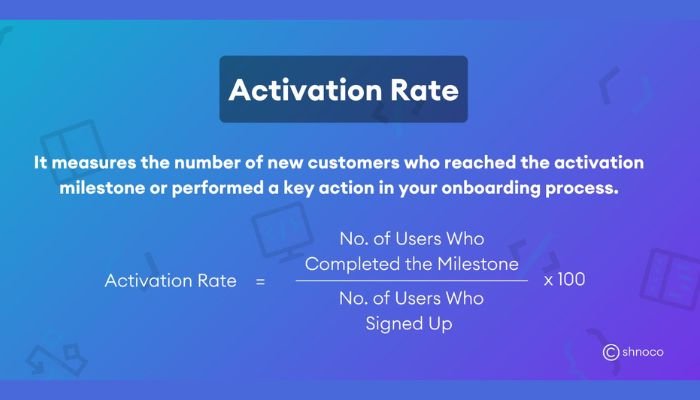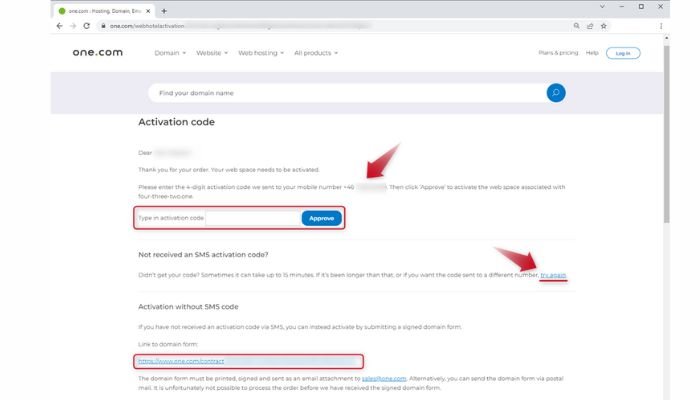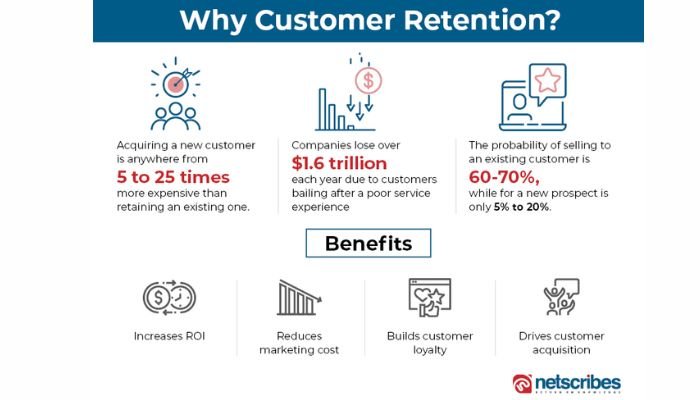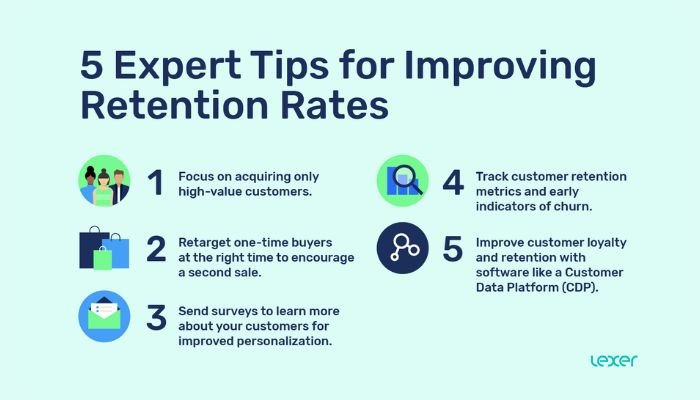Enhancing Engagement Rates and Achieving Greater User Retention
It’s no secret that activation rates and user retention are critical factors when it comes to driving engagement and ensuring the sustainable development of any business. With most apps competing heavily for user attention, the need to understand existing strategies and find innovative solutions relating to boosting activations in order to provide users with a better experience is more important than ever.
In this article, we’ll be delving into understanding more about activation rates, their relationship to engagement, and various ways to help improve them, along with some tips on how effective user retention can be achieved over time.
Through this discussion, we aim to address key industry needs and gain practical knowledge on how greater efforts towards engagement will result in lesser lead conversions but much higher quality customer relationships making app growth inevitable.
Understanding Activation Rates

Activation rates refer to the percentage of new and existing users undertaking a predefined action objectively after turning into customers/ consumers.
For instance, using an email service for sending the first pertinent email after completion of the sign-up process denotes successful activation.
Activation rates are keystones that measure user engagement or adoption level, enabling businesses to assess customer journeys & practices towards growth scale-up concurrently.
Factors influencing activation rates
The activation rate describes the proportion of a company’s users or customers who have completed an action that marks their transition to be an ‘active user’. Various factors determine the activation rate – the ease of onboarding, how much guidance is given to new adopters, simplicity with which components can be explored and employed.
Providing interactive tutorials, creative calls-to-action (CTAs), personalized recommendations and online help are just some ways these influence activation rates for successful consumers engaging with products/services.
The circumstances motivating signup – such as features that reinforce customer choice versus forced feature options, marketing approaches deployed, and natural ease experienced after the call to acquit services – also help identify key influential elements on activation rates over time.
Strategies to Boost Activation Rates
Streamlining onboarding processes

To keep users engaged and encourage them to keep returning, it is essential that the onboarding process be streamlined as much as possible. Streamlining the onboarding process involves making sure new users don’t have to provide unnecessary information, reducing registration steps or paperwork involved in using your product.
Through streamlining the process you can reduce exit rates during key user signup stages and maximize activation rates. Any questions asked should not require complex answers and all data required should utilize options like ‘checkboxes’ instead of crude typing fields.
Additionally, adding hints depending on where a user regrets will help significantly with guide navigation and eventually create more conversions over time.
Implementing interactive tutorials and walkthroughs
Supplements and interactive tutorials help reduce friction during the onboarding process while guiding new users through a step-by-step system. These enable an engaging introductory tour of your product’s features within a welcoming atmosphere.
Interactive tutorials demonstrate how different functions work, list all possible user commands in an understandable way, show related sets of actions everyone should ordinarily take to reach their goal faster — in favor of overwhelming them with choice paralysis which easily leads to bounce.
Providing clear descriptions from the start ensures quicker implementation and boosts activation rates.
Offering personalized recommendations and suggestions
Personalized recommendations and suggestions offer users value tailored to their particular interests and needs. Using an automated and dynamic algorithm-driven process, websites and apps can target users with offers that pique curiosity among first-time visitors or motivate returning visitors to engage with more content.
From offering special deals relevant to prior purchase history through the main shopping site, to inviting fresh and loyal followers alike into private online communities for exclusive discounts in the form of coupons or giveaways, personalized offerings will hinge on this effective emotional connection from brands themselves to grant a long-lasting user engagement.
Importance of User Retention

User Retention is an important concept for businesses as it measures the number of users that are retained over a certain time period. It focuses on the percentage of users who remain active, continue frequent use of a product or service, and generate repeat purchases. A higher rate means more customers keep coming back, showing they usually have an enjoyable experience with your brand and products.
If user retention is low then chances are people aren’t satisfied or the value proposition isn’t compelling enough to stay engaged. A good retention rate can lead to stronger customer loyalty and will allow businesses to reach their growth objectives in an efficient manner while cutting down expensive acquisition costs associated with finding new customers.
Benefits of retaining existing users
User retention is important for any business to achieve long-term growth and success. Retaining an existing user is more cost-effective than a new acquisition, which makes pushing for higher user retention all the more significant.
Retaining customers also means that companies can build up relationships with them and understand their individual needs better – information that further serves to foster loyalty and provide users with personalized content over time, leading to increasingly enhanced engagement in return.
Techniques for Achieving Higher User Retention

Delivering exceptional user experiences
Delivering exceptional user experiences is a critical part of ensuring higher levels of user retention. Companies need to ensure that all users have access to best-in-class resources and features that help them in accomplishing their goals within your product or service.
User interfaces must be friendly, compelling, easy to accustom to, and adjustable across different platforms.
Furthermore, companies should try personalizing interactions with customers by considering earlier behavioral data obtained or seeking timely results from surveys. Companies can also leverage automation techniques for providing better customer experiences like sending progress reports after meetings are implemented remotely etc.
Providing ongoing value through product updates and enhancements
Enhancing user retention is key for an organization’s success. Providing ongoing value through product updates and enhancements is one great strategy to increase user loyalty and ensure that users continue using the product’s benefits.
It showcases that there are solutions by listening to their feedback, and adds additional features to better address user pain points, thereby increasing satisfaction levels.
Additionally, these complementary services position organizations competitively as well by staying abreast of available technology trends in the market.
Establishing effective communication channels with users
Establishing effective communication channels with users is a powerful technique for increasing user retention and benefiting from engagement.
Introducing two-way interactions ensure that your business and products have the potential to intimately reach users.
Leveraging techniques such as email, push notifications, live chat support can greatly help in aiding conversations between customers and customer success representatives on anything from personal issues to feedbacks providing an opportunity user level problem solving.
Platforms that initiate open dialogues increase enable businesses to learn more about customer needs – uncover hidden revenue opportunities or market trends giving them an accurate understanding of how different individuals feel about their brand or product experience.
Conclusion
The need for tools, techniques and strategies to drive engagement and retain users has largely been emphasized in recent years. Enhancing user activation rates and improving user retention is crucial for any business’s short-term growth as well as sustained success over longer tenures of timeframes.
Taken together, the goal should be to combine creative meaningful experiences with personalization elements designed to develop emotional connections with the brand’s ecosystem thereby boosting engagement rates and achieving improved user retention.
This outcome can facilitate tremendous value additions not just from a revenue generation standpoint but also an overall reputation industry recognition level that can last through years while consistently allowing amazing opportunities for further innovation.
- Creating a Knowledge Base: A Simple Guide to Building one - September 12, 2023
- Enhancing Engagement Rates and Achieving Greater User Retention - August 29, 2023
- 5 Strategies for Enhancing Customer Experience and Driving PLG - August 15, 2023

